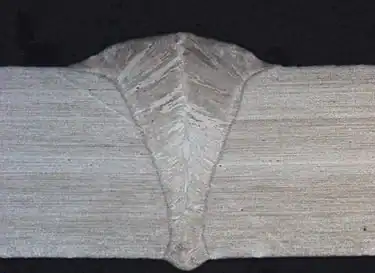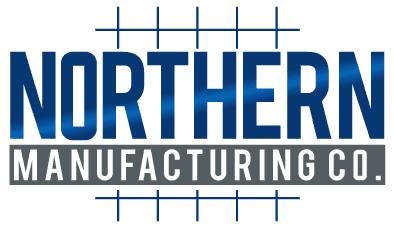The Engineer’s Guide to Duplex Stainless Steel Fabrication: From Blueprint to Performance

Welcome to your essential guide for navigating the complexities of duplex stainless steel fabrication. You’ve chosen duplex for its exceptional combination of high strength and superior corrosion resistance—properties critical for demanding applications in industries like Water & Wastewater and Chemical Processing. However, unlocking this potential requires more than just selecting the right material; it demands a deep understanding of how to specify it correctly and, as importantly, how to verify that its unique properties have been preserved through fabrication.
This guide is designed for the discerning client—the engineers, procurement managers, and quality assurance leaders accountable for the long-term performance and safety of their assets. That commitment to client empowerment and long-term performance is why Northern Manufacturing has been a leader in solving complex fabrication challenges since 1951, blending old-world craftsmanship with cutting-edge technology. This guide will enable you to move beyond baseline compliance and partner with your fabricator to ensure the final product delivers the reliability and lifecycle value you expect.
The central theme is this: Standard welding codes are necessary for structural integrity, but they are insufficient to guarantee the corrosion resistance of duplex stainless steel. This guide provides the knowledge to bridge that gap, ask the right questions, and demand the right verifications, transforming you from a customer into an informed stakeholder.
Key Considerations for Client Specification
A successful fabrication project begins with a clear and comprehensive specification. Your ability to articulate performance requirements is the first and most critical step in mitigating risk.
Defining Performance Requirements
Before any work begins, your fabricator needs a precise understanding of the component’s operational environment. Vague requirements lead to ambiguous outcomes. Be prepared to provide detailed information on:
- Service Environment: Specify the chemical composition of any corrosive media, including concentrations of chlorides, H₂S, and other aggressive elements.
- Operating Conditions: Clearly define the full range of expected temperatures and pressures, including potential for fluctuations or cycles.
- Mechanical Loading: Detail the static and dynamic loads the component will experience. This ensures the design properly leverages the high strength of duplex steel.
This data directly informs material selection, weld procedure design, and the necessary verification testing. A well-defined performance requirement is the foundation of a reliable asset.
Selecting the Right Duplex Grade
The family of duplex stainless steels offers a spectrum of performance. Understanding the basics allows for a more meaningful dialogue with your fabrication partner. A key metric is the PREN (Pitting Resistance Equivalent Number), a value that indicates a grade’s resistance to localized pitting corrosion. The formula is:
PREN = %Cr + 3.3(%Mo) + 16(%N)
A higher PREN is required for environments with high chloride content and elevated temperatures.
Here’s a comparison of Duplex grades 2205 and 2507:
| Feature | Duplex 2205 (UNS S32205) | Super Duplex 2507 (UNS S32750) |
| Typical PREN | ~35 | >40 |
| Key Characteristics | The “workhorse” grade, offering excellent strength and balanced corrosion resistance. | Superior strength and enhanced resistance to pitting, crevice corrosion, and stress corrosion cracking. |
| Common Applications | Chemical processing, transport, and storage; pulp and paper digesters; marine environments. | Oil & gas equipment; desalination plants; flue-gas desulfurization (FGD) systems; high-chloride environments. |
Matching the grade to the application is a primary driver of cost-effectiveness. Over-specifying can lead to unnecessary expense, while under-specifying is a direct path to premature failure.
Critical Fabrication Controls (A Fabricator’s Responsibility)
A fabricator’s expertise is most evident in their control over the material’s metallurgy. As a client, understanding these controls allows you to appreciate where quality is truly created.
The Importance of Phase Balance
Duplex stainless steel derives its name and properties from its two-phase microstructure, consisting of roughly 50% austenite and 50% ferrite. This balanced structure is the source of the material’s unique combination of high strength (from the ferrite phase) and excellent corrosion resistance and toughness (from the austenite phase).
Processes like welding introduce intense heat, which can disrupt this delicate balance. Improper thermal management can lead to the formation of undesirable intermetallic phases or an excess of ferrite in the weld and Heat-Affected Zone (HAZ). This imbalance severely compromises both corrosion resistance and mechanical toughness. A fabricator’s control over phase balance is a direct measure of their ability to deliver on the promise of duplex steel.
Here’s an example of correct vs. imbalanced phase balance in a micrograph:
Welding: The Heart of Duplex Fabrication
Welding is the most critical operation. At Northern Manufacturing, our over 60 welders are certified to AWS and ASME BPVC Section IX standards, but we know duplex requires expertise beyond the codebook. Three factors are paramount:
- Heat Input: Too much or too little heat can throw the phase balance into disarray. Precise control is non-negotiable. While procedural discipline in GTAW and GMAW processes is foundational, Northern also utilizes advanced technologies like Laser Welding. The low heat input and minimal HAZ characteristic of laser welding make it an ideal process for preserving the sensitive microstructure of duplex steels.
- Shielding Gas: The composition of the shielding gas is critical for protecting the molten weld pool and ensuring the correct final microstructure.
- Weld Consumables: Using the correct filler metal, which is typically “over-alloyed” with nickel, is essential to promote the formation of austenite as the weld cools.
An improperly executed weld can turn a high-performance material into a liability. The strength may still pass a standard code test, but the compromised corrosion resistance can lead to catastrophic failure in service.
Material Traceability and Certification
You must have absolute confidence in the materials used. Insist on a partner with an ISO 9001:2015 certified quality system that guarantees a clear chain of custody. Expect full Material Test Report (MTR) traceability from the producing mill to the finished product. At Northern, we further verify this with in-house Positive Material Identification (PMI) using our Niton XL2 PLUS analyzer to confirm alloy grades upon receipt.
Beyond Standard Codes: The Need for Enhanced Verification
This is the most critical concept for clients to understand. Relying solely on standard welding codes for duplex fabrication introduces significant risk.
Codes like ASME Section IX and AWS D1.6 are foundational for ensuring the mechanical strength of a weld. They require procedures and welders to pass tests proving the weld is strong and free of critical defects. However, they were not designed to guarantee the corrosion resistance or metallurgical phase balance of duplex stainless steels. A weld can pass all standard mechanical tests (like bend and tensile tests) and still be dangerously susceptible to corrosion due to an imbalanced microstructure.
To ensure you receive a component that delivers both strength and corrosion resistance, you must specify additional testing as part of the Welding Procedure Specification (WPS) qualification. It is your responsibility to specify these additional verifications in your procurement documents. Your specification authorizes this higher level of quality assurance.
Have questions about specifying duplex steel? Request a technical consultation with our on-staff CWI.
Essential Verifications Clients Should Demand
Your role is to request, review, and understand the documentation that proves quality has been achieved. Here is what to expect from an expert fabricator like Northern Manufacturing.
Welding Procedure Specification (WPS) Qualification
When reviewing a WPS, look for evidence that it was qualified not just to a code, but also with these enhanced tests:
- Required: Corrosion Testing: The WPS qualification record should include a report from a corrosion test, such as ASTM G48. This ferric chloride pitting test directly proves the weld’s corrosion resistance in an aggressive environment.
- Required: Microscopic Phase Balance Verification: The qualification record must include a metallographic analysis report. This involves examining a weld cross-section under a microscope to measure the ferrite-austenite phase balance, confirming it is within the acceptable range (typically 40-60% ferrite).
In-Process Controls and Final Inspection
- Ferrite Testing: During production, we use portable ferritoscopes to measure the ferrite content of completed welds. You should expect to see logs of these production measurements as evidence of ongoing quality control.
- Non-Destructive Testing (NDT): NDT is used to find weld defects. Our on-staff Certified Welding Inspectors (CWI) and ASNT SNT-TC-1A certified personnel (Level II & III) oversee these processes to ensure integrity. Common verifications include Visual Testing (VT), Liquid Penetrant Testing (PT), and Radiographic Testing (RT) or Ultrasonic Testing (UT).
- Dimensional and Visual Inspection: Finally, a comprehensive dimensional report, generated from our Leica AT960 Tracker & AS1 XL Scanner, confirms the component is built to tolerance.
Partnering for Success: Selecting the Right Fabricator
Your choice of fabrication partner is the single greatest factor in your project’s success. When vetting fabricators, ask targeted questions.
- Q: Can you show me WPS qualifications for Duplex 2205 that include ASTM G48 corrosion testing and metallographic reports?
A: Yes. We consider these tests standard practice for our duplex WPS qualifications and can provide full documentation for your review. - Q: Describe your procedure for in-process ferrite testing.
A: Our ISO 9001:2015 certified QMS includes a standard procedure for ferrite testing on production welds at specified intervals. The results are logged and become part of the final documentation package. - Q: How do you manage material traceability?
A: We provide full MTR traceability and conduct incoming PMI verification on all duplex materials. This is a core component of our quality system.
The best fabricators act as partners. We will review your specifications and proactively offer suggestions to enhance performance or manufacturability. This collaborative approach is the hallmark of a partnership that delivers lasting value and ensures your critical components perform as intended for their entire lifecycle.
Ensure your next duplex stainless steel project is built right from the start. Partner with a fabricator who has the certified processes, advanced equipment, and decades of experience to protect your investment.
Note: Industry standards such as those from ASTM, AWS, and ASME are subject to revision. Always consult the latest version of any standard for project-specific requirements. Northern Manufacturing’s quality system ensures all work is performed to the applicable standards and revisions specified in the client contract.
Discuss Your Fabrication Challenge with Our Engineering Team
Partner with a fabricator that protects your investment. Submit your drawings to our team for a technical review and a comprehensive quote that reflects the true cost of quality.
